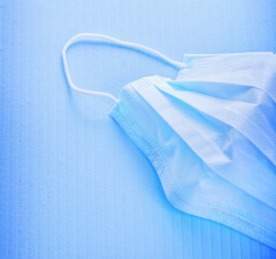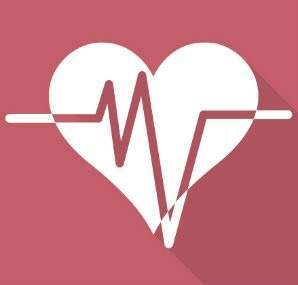
From food recycling programmes to chemical-free cosmetic launches, innovative energy generation techniques to the latest plant-based packaging, not a day goes by without a new sustainability story hitting the headlines. Buyers operating in industries ranging from automotive to aerospace are increasingly asking their suppliers to enhance their environmental credentials in an effort to make the most out of the diminishing resources available.
Healthcare procurers are no different. Hospitals around the world are looking for suppliers who understand the importance of sustainability and demonstrate their commitment to the environment through the devices they produce. US-based Kaiser Permanente, for example, released a sustainability scorecard last year that requires suppliers to provide environmental data for medical equipment and products used in its hospitals, medical offices and other facilities. But, by and large, the medical device market is not responding to its procurers’ demands.
"There is a drive within hospitals to make the shift, but they’re finding that the market is not providing it," says Anja Leetz, executive director of Health Care Without Harm Europe (HCWH). "Companies are starting with the easy things, such as using recycled paper and cardboard, but it’s far more of an effort to change their production. From a company perspective, there needs to be more demand from the market and enough manufacturers spending money on research and development. Long-term, we lack resources, so we need to go towards sustainable and safer products."
Phase-out of PVC
One issue on which many procurers have been particularly vocal is the phasing out of polyvinyl chloride (PVC). Most PVC devices are softened with the chemical di(2-ethylhexyl) phthalate (DEHP), which leaches out of medical devices into the liquids the device contains and subsequently into the patient. There is increasing evidence that DEHP is harmful, especially to boys exposed in the womb or during their first few weeks of life.
Many hospitals, including Karolinska University Hospital in Sweden, the Vienna Hospital Association in Austria and Clinique Champeau in France, have therefore begun to phase out PVC medical devices and packaging in favour of PVC-free alternatives with great success. For example, at the Vienna Hospital Association, the PVC share in medical devices dropped from 10% of the total weight of medical waste in 1992 to 0.6% in 1999.
The Jegrelius Institute for Applied Green Chemistry in Sweden followed suit last year, launching a one-year project to stimulate the development of a PVC-free blood bag. The leaders of the project felt that the market demanded this product, but medical device manufacturers were failing to meet this need.
"For the market, PVC is very versatile and has been around for a long time so manufacturers are not keen to eliminate it," Leetz notes. "When our Swedish members went to companies and said they wanted to replace PVC blood bags, the companies responded that the Swedish market was too small and so it didn’t make economic sense."
Clearer signals
The solution for Leetz is for more hospitals to make their needs clear to suppliers; if there is enough demand for green medical products, it will be much easier for suppliers to see the business sense in investing in sustainability. "We want to connect hospitals, local councils and other procurement bodies and make sure they are saying loudly and clearly what they want. The market needs to be challenged and given a clear signal," she explains. "By working with procurers and having clear demands on the market, it makes it easier for companies to plan, change and adapt."
HCWH’s American counterpart Practice Greenhealth has launched a pioneering initiative aiming to encourage the production of environmentally-preferable medical products in the US. "Group purchasing organisations (GPOs) have all been asking the same questions of their suppliers, so we decided to launch a standardised set of questions to simplify the process for suppliers," says Beth Eckl, director of the environmental purchasing programme at Practice Greenhealth. "These purchasing organisations wanted to send a signal to the industry."
The new environmental scorecard, which was released in October 2011 and is endorsed by the five largest GPOs in the US, is divided into two categories, natural resources and chemicals of concern (see more details, right.) "There are no green standards or specifications for medical products so we’ve tried to identify some of the attributes medical products should have to be more environmentally preferable," Eckl explains. "If suppliers were to meet all of those, it would be tremendous."
Leetz couldn’t be more positive about the new development: "This will really shift the market and we are really happy this environmental scorecard has been adapted. We are now in discussion with some of our big members to find out to what extent they can use this scorecard in Europe. We’re hoping this improvement in the US will result in global change."
It’s only the beginning, according to Eckl. "This set of questions is focused on products and doesn’t include corporate social responsibility; that’s the next step," she remarks. "Also, these questions don’t address products that plug in or have a battery. Electronic devices are a completely different issue." As initiatives such as Practice Greenhealth’s scorecard become more widespread, it will only become clearer to the medical device market that investing in going green really is beginning to make sound business sense.
Reprocessing must play its part
Medical device manufacturers have traditionally shied away from the reprocessing of single use devices, but the increasing industry focus on medical waste means this is set to change, as Lars Thording, of Stryker Sustainability Solutions, and Dan Vukelich, of the Association of Medical Device Reprocessors, explain. Hospitals in the US generally accept that third-party reprocessing of single-use devices (SUDs) is a safe and effective process that can significantly reduce the volume of medical waste. Indeed, the highly regulated US reprocessing industry safely reprocessed over 50 million devices and prevented over 10,000t of medical waste from entering landfills between 1997 and 2007. However, SUD reprocessing has traditionally had a negative impact on the bottom lines of original equipment manufacturers (OEMs).
According to Lars Thording, senior director of marketing and public affairs for Stryker Sustainability Solutions, the medical device giant’s reprocessing division, this mindset is beginning to change. "Stryker executives understood the paradigm shift happening in the healthcare industry and realised the need to expand its offering to help hospitals optimise resources," he explains. "That’s what led us to become the first OEM to acquire a reprocessing company in January 2010."
The programme has since helped US hospitals divert more than 6.6 million pounds of medical waste from landfills and save more than $600,000 each year. Stryker is now calling for other medical device manufacturers to follow in its footsteps. "Partnerships between OEMs and reprocessors mean hospital systems gain greater access to cost saving solutions in order to support quality care," Thording explains, adding that Ethicon Endo-Surgery (EES), historically one of the industry’s toughest critics of reprocessing, has recently announced plans to acquire medical device reprocessor SterilMed. "We’re pleased that another dominant OEM has decided to join our effort."
For Dan Vukelich, president of the Association of Medical Device Reprocessors, the next step for the global reprocessing industry is to get Europe’s 27 member states on board. Although the European Commission has historically been opposed to the practice of reprocessing, Vukelich is hopeful that a new proposal, set to be released in the first quarter of 2012, will see this mindset reversed.
"What we’d like to see happen is for the EU to adopt one single policy like we have in the US that would legitimise and regulate reprocessing," he notes. "This would give hospitals the option to outsource to third party reprocessors who could save them a whole lot of money and reduce a whole lot of medical waste."
Practice Greenhealth’s standardised environmental questions for medical products
Practice Greenhealth’s nationally recognised set of environmental criteria aims to encourage manufacturers and suppliers to reduce the negative environmental and health impacts of their products and services. Here is a selection of the questions suppliers are being asked to answer:
Natural resources:
– Does this product contain postconsumer recycled content (excluding steel)? If yes, what percentage by weight?
– Is this product recyclable?
– Does the product’s primary packaging contain postconsumer recycled content? If yes, what percentage?
– Is this product packaged without polystyrene?
Chemicals:
– Is this product free of intentionally added polyvinyl chloride (PVC)?
– Is this product free of intentionally added phthalates: DEHP, BBP, DnHP, DIDP, and DBP? If no, please specify the phthalate(s)
– Is this product free of intentionally added Bisphenol A (BPA) or BPA derived plastics (such as polycarbonate plastic and resins)?
– Will this product be classified (on its own or when aggregated) as non-hazardous waste according to EPA’s RCRA when disposed? (under 40 CFR 261.31-33)?

This article was first published in our sister publication Medical Device Developments.






